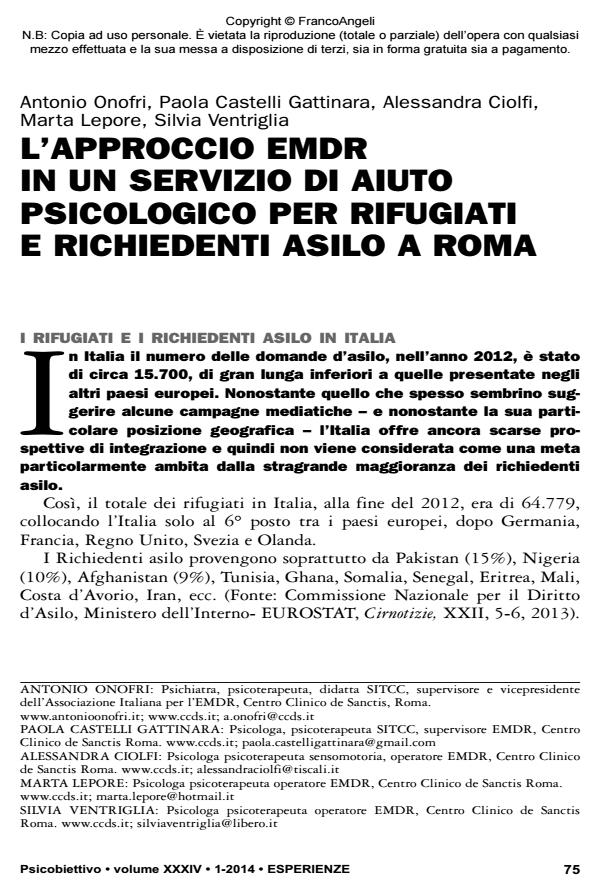The EMDR approach used as a tool to provide psychological help to refugees and asylum seekers in Rome
Journal title PSICOBIETTIVO
Author/s Antonio Onofri, Paola Castelli Gattinara, Alessandra Ciolfi, Marta Lepore, Silvia Ventriglia
Publishing Year 2014 Issue 2014/1
Language Italian Pages 21 P. 75-95 File size 571 KB
DOI 10.3280/PSOB2014-001006
DOI is like a bar code for intellectual property: to have more infomation
click here
Below, you can see the article first page
If you want to buy this article in PDF format, you can do it, following the instructions to buy download credits

FrancoAngeli is member of Publishers International Linking Association, Inc (PILA), a not-for-profit association which run the CrossRef service enabling links to and from online scholarly content.
The Authors briefly describe the most common psychiatric symptoms in a specific sample of immigrants, the Refugees and the Asylum Seekers. They remind the high frequency of complex posttraumatic reactions (Herman, 1997) in this clinical population, characterized by multiple, prolonged and often interpersonal traumatic events. Quite important seem to be the Somatization Disorders and those therapeutic interventions capable to pay particular attention to the body. After a short review of the psychotherapy for Refugees and Asylum Seekers, the Authors report first the institutional story of a Clinic for Posttraumatic Stress Disorders and of a Service of Psychological Aid specifically directed to this clinical population; then, they describe a therapeutic protocol with the EMDR approach, phase oriented, initially centered on the patient’s stabilization, on the activation of individual resources, on the control of the dissociative and anxious symptoms, on the improvement of the bodily symptoms, and only in a second moment on the reprocessing and integration of the traumatic memories (Shapiro, 2012). The paper ends with the report of three exemplificative single cases.
Keywords: EMDR; Refugees; Asylum Seekers; PTSD; Complex Trauma; Somatization Disorders
Antonio Onofri, Paola Castelli Gattinara, Alessandra Ciolfi, Marta Lepore, Silvia Ventriglia, L’approccio EMDR in un servizio di aiuto psicologico per rifugiati e richiedenti asilo a Roma in "PSICOBIETTIVO" 1/2014, pp 75-95, DOI: 10.3280/PSOB2014-001006